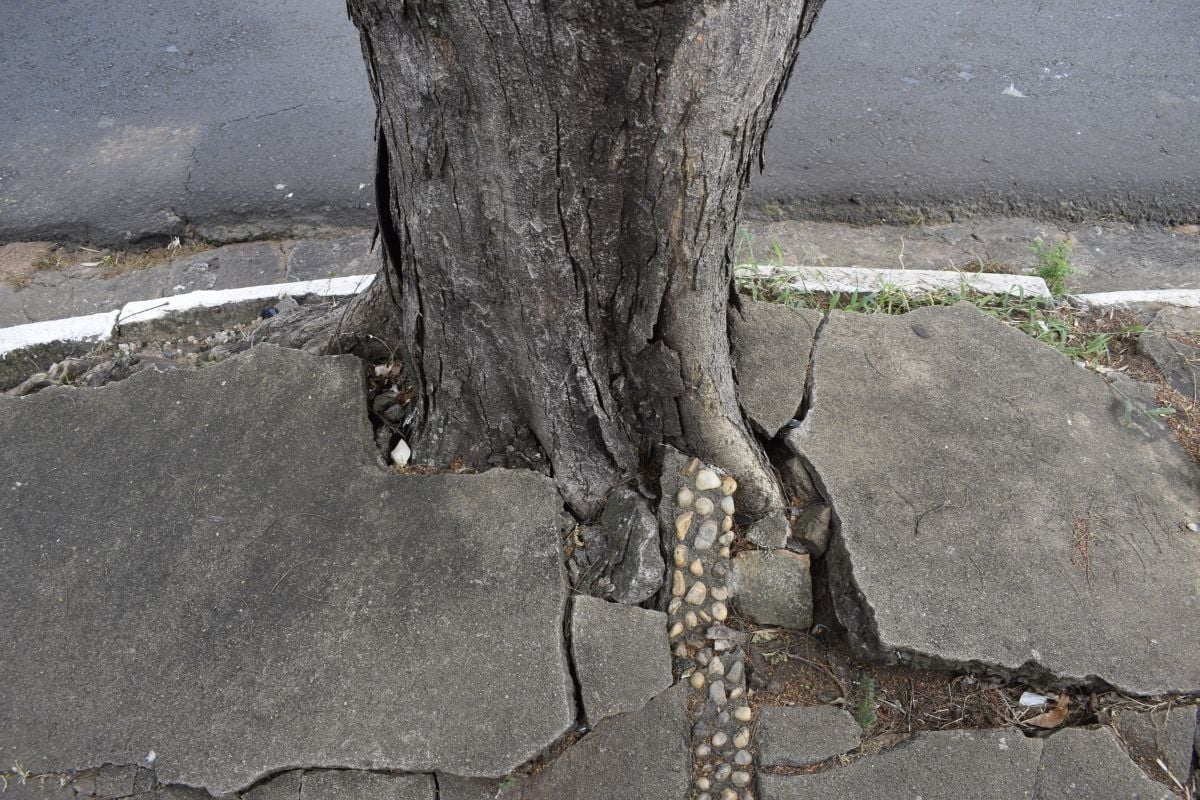
While concrete leveling is a versatile repair method, it can’t fix all concrete-related issues.
Are you facing issues with your concrete and wondering if concrete leveling is the right solution?
Cost-effective and convenient, concrete leveling is a versatile repair method that can help with many different problems, ranging from pesky trip hazards to intricate repairs. However, concrete leveling isn't a magical fix for all concrete-related issues.
At A-1 Concrete Leveling, over our 30+ years of experience, we've encountered countless scenarios where concrete leveling worked wonders, and others where it simply wasn't the right fit.
We recognize the importance of giving you a clear understanding of the limitations of concrete leveling, along with any other information you’ll need to make a decision on whether or not concrete leveling is right for your situation.
For this reason, we've created this article to walk you through the process of concrete leveling and highlight three specific issues that concrete leveling cannot solve.
Understanding Concrete Leveling
Before getting into problems concrete leveling can’t solve, let's first talk about how concrete leveling actually works.
To lift and level concrete, we drill strategic holes in the settled slabs and pump a special leveling compound underneath. This compound fills the empty spaces and puts pressure on the slabs, lifting them back into place.
Once the concrete is back in the right position, we seal off the drill holes with a nonshrink grout, and the area is ready to use again like normal after 24 hours.
Related Resource: The Concrete Leveling Process: How Concrete Leveling Works
1. Surface Damage
Concrete leveling works its magic from the bottom up, which means it won't fix any damage on the surface of the slabs. So, if you're dealing with spalling (when the surface flakes off), chipping, or significant wear and tear, concrete leveling alone won't cut it.
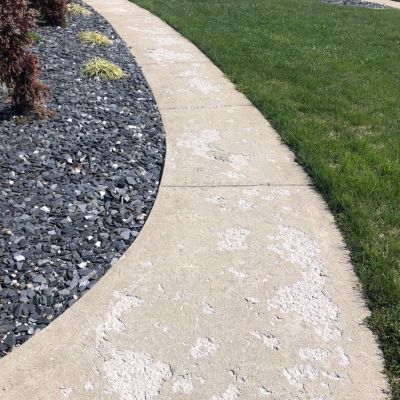
In this case, you might need to resurface the concrete (a temporary fix) or even consider replacing the slabs altogether.
It’s important to note that the concrete leveling process still works to lift up and level surface-damaged concrete, it just won’t affect the surface texture. Concrete leveling should be done before attempting to resurface the concrete, if you choose that route.
2. Concrete Poured With Surface Dips
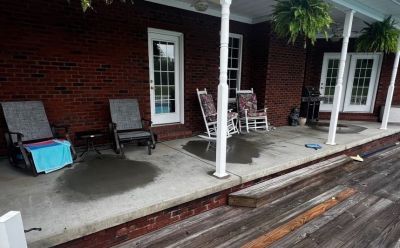
Like with surface damage, if your concrete was originally poured with dips or valleys in its surface that cause water to puddle, concrete leveling isn’t a complete solution.
While leveling settled concrete slabs that happen to have dips and valleys in their surface may help reduce puddling or water retention, at the end of the day, concrete leveling works from underneath the slab, so it won’t change the surface texture or even out the dips.
Considering concrete leveling for water or drainage problems? Check out this related resource: Concrete Leveling For Water Issues: What Should You Expect?
3. Crumbling or Heavily Cracked Slabs
Concrete leveling requires a solid slab that can handle the pressure from below during the lifting process. If your slab is falling apart, breaking into pieces, or severely cracked, we're sorry to say that concrete leveling won't be able to lift it back up.
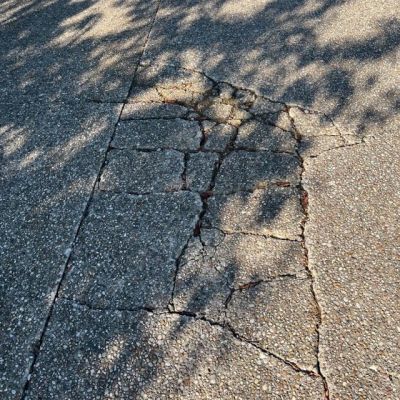
In cases like these, it would be too difficult to make sure each piece of concrete is even and level with the surrounding slabs. It’s also possible that the leveling compound will leak out of the gaps and cracks instead of building up the pressure needed underneath the slab in order to lift it up.
If you’re dealing with crumbling, broken-up, or heavily cracked concrete, it's best to go for a complete replacement to ensure a durable and long-lasting solution.
4. Settling Concrete Pavers
Unfortunately, the concrete leveling process won’t work on settled concrete pavers if they’re sitting on a sand or gravel base instead of a poured concrete slab.
Not only are concrete pavers thinner and more susceptible to breaking while being drilled, but it is much harder to build up the pressure needed for lifting, or to get multiple smaller pavers level with each other.
To fix settled pavers in this situation, each of the affected ones needs to be removed, and the base underneath should be flattened and leveled before they’re put back in the correct place.
However, if your pavers are on top of a poured concrete slab, we can lift the settled pavers by first lifting the concrete slab underneath and replacing the pavers as needed.
5. Severe Tree Root Lifting
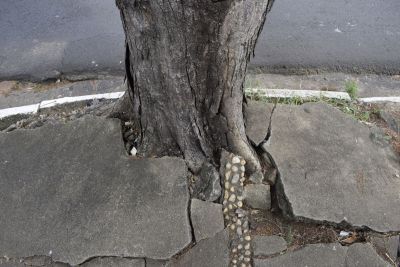
When trees are planted too close to concrete, their roots can grow underneath the slab, eventually pushing up against it and causing the slab to lift out of place.
If the concrete hasn’t been lifted too far out of place by the tree roots, the surrounding slabs can be lifted up to match the new slope with concrete leveling.
However, if the tree roots are lifting the concrete too far out of place, concrete leveling won’t be able to fix it. Also, it’s very likely that the tree roots will keep growing and push the concrete further out of place as time goes on if you don’t cut them back or install a root barrier.
Each case of tree roots lifting concrete slabs is unique, so it’s best to seek professional advice on how best to repair the area.
What's Next?
If you're dealing with any of the problems we mentioned above, concrete leveling may not be the right solution for you, so exploring other concrete repair options can help you find the best fit for your specific needs.
However, if you’re still on the fence about whether or not your concrete is a good fit for concrete leveling, you can send us photos with the estimate request link below so we can help you judge.
If end up unable to find a long-lasting repair solution, it might be worth considering a complete concrete replacement, along with proper maintenance practices from the get-go to keep it in tip-top shape for years to come.
At A-1 Concrete Leveling, we've been helping folks like you with their concrete needs for over 30 years. If you're interested in how our services can restore or protect your concrete, click the link below to schedule a free concrete inspection and cost estimate with one of our A-1 experts.
By the way, we have an extensive online resource library where you can learn more about concrete repair and maintenance, called Concrete Academy. Check out these related topics:
Sarah Etler joined A-1 Concrete Leveling after receiving her Bachelor of Arts degree in English from Northern Kentucky University. As A-1's Content Marketing Manager, she works closely with industry experts to produce content that will best answer questions related to concrete repair and maintenance practices. Sarah loves living a life full of discovery and is excited every day to see what new things she can learn and share with those around her.